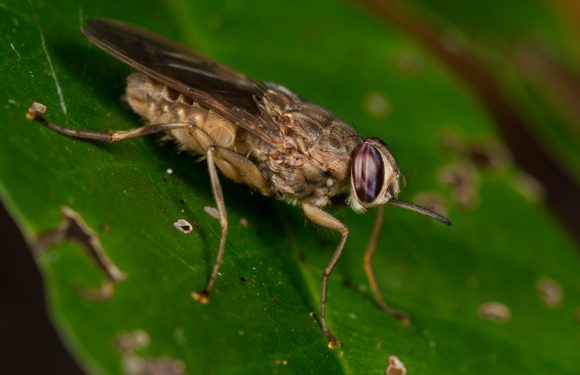
There are an estimated 8.7 million total species on earth – with 6.5 million species found on land and 2.2 million dwelling in the ocean. While many animals live harmoniously alongside us, some species have earned a reputation for their potential to be deadly to humans.
In this article, we’ll unveil the 20 most dangerous animals based on the annual number of human fatalities attributed to them and see which is the deadliest animal of them all (ie., which animal kills the most people).
What Makes Animals Dangerous to Humans?
Animals have evolved a variety of natural weapons that can be potentially fatal to humans. Here’s a list of some of weapons found in the animal kingdom:
- Venom: Various creatures use venom to incapacitate or kill their prey.
- Claws: Many animals have sharp claws that can inflict serious injuries.
- Teeth: Predators have powerful jaws with sharp teeth designed to tear into bodies.
- Antlers, Horns, Tusks: Certain species use their antlers and horns to fight rivals and defend against threats.
- Spines, Stingers: Creatures have spines, some venomous, that can cause painful injuries or death.
- Hooves: Large ungulates can deliver powerful kicks with their hooves.
- Physical Power: The sheer size and strength of some species can make them inherently dangerous.

Additionally, animal behavior can pose risks to humans:
- Predatory and Defensive Behavior: Animals may attack if they perceive humans as prey or threats.
- Territoriality: Many species violently defend their territory against intrusions.
- Disease Transmission: Some animals can harbor serious diseases that are transmissible to humans.
- Maternal Protection: Female animals exhibit heightened aggression when protecting their offspring.
The Deadliest Animals in the World (to Humans)
20. Shark (10 deaths per year)

Despite their fearsome reputation, sharks are responsible for around ten human deaths annually.
While it’s true that they’re at the top of the food chain and have a keen sense for detecting potential prey, humans are not their preferred meal. Shark attacks are often cases of mistaken identity or a result of the shark testing its surroundings.
19. Wolf (10 deaths per year)

Wolves, often maligned in folklore and fairy tales, have a reputation that far exceeds their actual threat to humans. Wolves are typically fearful of humans and for good reason. Humans hunted wolves to the edge of extinction before efforts were made to protected them.
Historically, wolf attacks that occurred against humans occurred mostly prior to the 19th century with most of them happening during the Middle Ages and earlier. Today, rabid wolves are the most common perpetrators of wild wolf attacks.
They account for approximately ten deaths per year, often related to rabies transmission.
18. Jellyfish (40 deaths per year)

Jellyfish, with their delicate appearance, harbor some of the ocean’s most potent stingers. While most species are harmless to humans, a few, like the box jellyfish, contain venomous tentacles that can deliver stings and, in extreme cases, be life-threatening.
While fatalities are rare, their stings can cause excruciating pain and severe allergic reactions. Box jellyfish are considered the most dangerous animal in the ocean or the deadliest sea creature.
17. Tiger (50 deaths per year)

Tigers, one of the most majestic big cats, are also among the deadliest predators.
They are known for their strength, agility, and sharp claws and teeth. Human-tiger conflicts can turn fatal, especially when these massive cats feel threatened, hungry, or cornered.
Tigers are responsible for several human deaths annually, particularly in regions where they share habitats with local communities.
16. Bee (60 deaths per year)

Bees, while playing a crucial role in pollination and honey production, can be highly dangerous when provoked.
For individuals with bee allergies, even a single sting can lead to anaphylactic shock, a severe and potentially fatal reaction. Multiple bee stings can pose a risk to anyone, as the venom injected can overwhelm the immune system and lead to significant health issues.
15. Elephant (100 deaths per year)

Elephants, the world’s largest land mammals, are involved in about 100 human fatalities annually, often resulting from human-elephant conflicts.
Deadly elephant attacks are infrequent. These giants are often provoked before they become a danger to humans. They attack when they feel threatened or their habitats are encroached upon.
14. Lion (100 deaths per year)

Lions, known as the “king of the jungle,” are responsible for roughly 100 human deaths per year, primarily in areas where human populations overlap with these big cats.
Lions may be drawn to human settlements by the scent of food, livestock, or even garbage. In areas where natural prey is scarce or where lions have developed a taste for livestock, they may also view humans as potential prey.
13. Hippopotamus (500 deaths per year)

Surprisingly, hippos are responsible for roughly 500 human deaths each year, making them one of Africa’s most dangerous large mammals.
Despite their seemingly docile nature, these hefty herbivores are territorial and exceptionally protective of their space, especially in the water. When agitated, they can charge at boats, vehicles, or unsuspecting humans, causing catastrophic injuries or fatalities.
12. Crocodile (1,000 deaths per year)

Crocodile attacks claim approximately 1,000 lives annually.
With their stealth and powerful jaws, crocodiles are aquatic predators. In regions where crocs and people share waterways, fatal attacks are more common than one might think. Human activities like swimming, fishing, or washing near crocodile-inhabited waters carry inherent risks.
These reptiles are masters of ambush and can launch lightning-fast attacks on their prey, which sometimes tragically includes humans.
11. Tapeworm (2,000 deaths per year)

Despite their diminutive size, tapeworms can cause considerable harm to humans.
These parasitic flatworms are typically contracted by consuming contaminated food or water. Once inside the body, tapeworms can grow to impressive lengths and cause a range of health issues, including abdominal pain, malnutrition, and even seizures. Infestation can lead to infections that result in about 2,000 fatalities annually.
10. Tsetse Fly (2,300 deaths per year)

The tsetse fly, found in Africa, are vectors of a disease called African trypanosomiasis, commonly known as sleeping sickness.
When infected tsetse flies bite humans, they transmit the parasite that can invade the central nervous system, leading to severe symptoms, including sleep disturbances, confusion, and, ultimately, death if left untreated. This parasitic disease affects thousands, resulting in around 10,000 deaths annually.
9. Scorpions (3,500 deaths per year)

Scorpions, known for their creepy appearance and painful sting, are dangerous creatures.
Their stings can cause severe pain, swelling, numbness, and, in some cases, life-threatening symptoms. Scorpions are often found in arid regions and can easily hide in shoes, clothing, or under rocks, making human encounters quite common.
8. Ascaris Roundworm (5,000 deaths per year)

Ascaris roundworms, also known as intestinal worms, are a common human parasite, especially in areas with poor sanitation.
These parasites typically enter the human body through contaminated food, water, or soil. Infections can lead to malnutrition, stunted growth, and developmental delays, particularly in children. They also cause abdominal pain, malnutrition, and even intestinal blockages.
Ascaris roundworms infect millions of people worldwide, contributing to an estimated 5,000 deaths annually.
7. Assassin Bug (7,000 deaths per year)

Assassin bugs, specifically the kissing bugs within this subfamily, can transmit a murderous parasitic disease known as Chagas disease to humans.
These nocturnal blood-feeding insects often bite around the lips or face, hence the name “kissing bugs.” While their bites are usually painless, the parasite they carry can lead to chronic and severe health issues, including heart and digestive problems.
The parasitic infection kills approximately 7,000 individuals each year, predominantly in Central and South America.
6. Freshwater Snail (10,000 deaths per year)

Freshwater snails may not seem scary, but they play a role in the transmission of a parasitic disease called schistosomiasis.
When people come into contact with water bodies inhabited by infected snails, they can contract the parasite, leading to symptoms like fever, cough, and abdominal pain.
Over time, chronic schistosomiasis can result in organ damage and death.
5. Dog (13,000 deaths per year)

While dogs are beloved pets for many, they are responsible for approximately 13,000 human deaths each year.
Dog maulings or attacks can result in severe injuries or fatalities. But the bigger threat associated with dogs is the transmission of rabies, a viral disease that affects the central nervous system.
Dogs may pass the virus to humans through bites or scratches. If not treated promptly after exposure, rabies is almost invariably fatal.
4. Sandfly (14,000 deaths per year)

Don’t let the diminutive size of sandflies fool you; these tiny insects can pack a potent punch.
Found in various parts of the world, sandflies are vectors for Leishmaniasis, a group of parasitic diseases affecting the skin, mucous membranes, and internal organs. While not typically fatal, Leishmaniasis can cause painful sores, ulcers, and long-lasting health issues.
In some instances, the disease can lead to disfigurement and complications if left untreated.
3. Snake (75,000 deaths per year)

Snakes, despite their vital role in many ecosystems, are responsible for around 75,000 human deaths each year, primarily due to venomous snakebites.
Venomous snakes, such as vipers, cobras, and rattlesnakes, produce toxins that can cause a range of symptoms. These symptoms may include localized pain, swelling, tissue damage, difficulty breathing, paralysis, and bleeding.
In severe cases, untreated snakebites can lead to death.
2. Human (540,000 deaths per year)

Shockingly, humans are the most dangerous land mammal and the second deadliest species overall, causing approximately 540,000 deaths annually through various means, such as homicides, accidents, and conflicts.
These statistics underscore the tragic consequences of violence, negligence, and war, highlighting the urgent need for peace, safety, and conflict resolution.
1. Mosquito (780,000 deaths per year)

The tiny mosquito is the most dangerous animal in the world as well as the most dangerous insect, claiming 780,000 lives annually.
These relentless pests spread destructive diseases, including malaria, dengue fever, Zika virus, and West Nile virus, primarily through their bites.
While the majority of mosquito-borne diseases are preventable or treatable, they continue to have a devastating impact on global public health, especially in tropical and subtropical regions.




























































